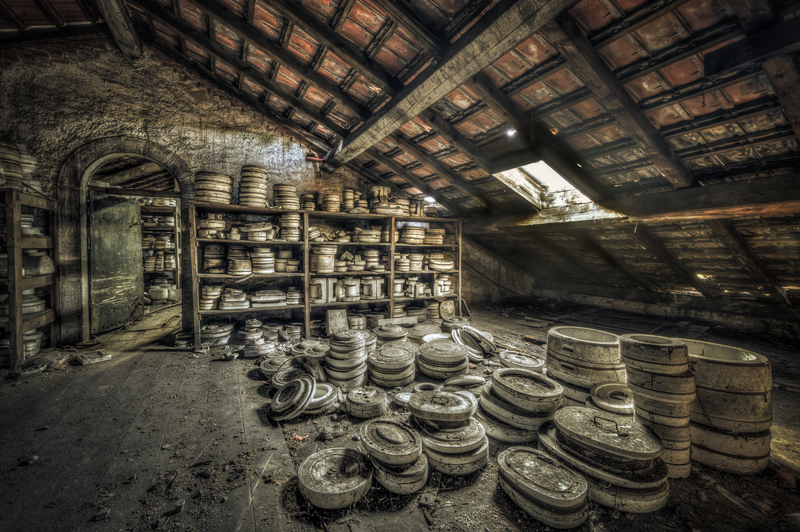Safeguard Your Velvet Curtains: Essential Cleaning Techniques
Posted on 02/06/2025
Safeguard Your Velvet Curtains: Essential Cleaning Techniques
Velvet curtains are a symbol of luxury, elegance, and sophistication. However, their stunning appearance comes with particular care requirements. Without the proper cleaning methods, your plush drapes may lose their sheen, collect dust, or even become irreparably damaged. In this comprehensive guide, we will explore the best cleaning practices for velvet curtains, so you can keep your home stylish while extending the life of your treasured window treatments. If you want to safeguard your velvet curtains, follow these essential techniques and maintenance tips.
Why Velvet Curtains Require Delicate Cleaning
Velvet is a unique fabric, woven with a high density of threads that create its signature thick pile. This texture gives velvet its soft, luxurious feel, but it also makes the material particularly sensitive to moisture, heat, and rough handling. Incorrect cleaning can crush the pile, fade bright colors, distort the shape, or cause water spots and stains.
Main reasons why velvet drapes need extra attention:
- Delicate pile: Velvet's plush surface can be easily flattened or damaged by harsh methods.
- Spotting risk: Water or cleaning solutions may leave marks if not applied correctly.
- Dye sensitivity: Bold dyes are prone to fading or bleeding without gentle treatment.
- Lint and dust: Velvet attracts dust, pet hair, and lint more than other fabrics.
Protecting your velvet curtains means adopting cleaning strategies tailored specifically to this special fabric.

Regular Maintenance: Keeping Velvet Curtains Pristine
Before stains or dust settle in, routine maintenance is key to preserving your velvet drapes' elegance. Here are simple, yet effective ways to maintain their rich appearance:
1. Frequent Dusting and Preventing Lint
- Use a soft brush: Gently sweep a clothes brush or lint roller along the nap (the direction of the velvet's pile) weekly to remove dust and hairs.
- Avoid abrasive tools: Don't use stiff brushes or rough sponges, as these can crush the velvet's texture.
2. Vacuuming Velvet Curtains
- Select the right attachment: Use your vacuum's upholstery or soft brush tool.
- Gentle strokes: Vacuum in the direction of the nap, and never press too firmly to avoid indentations.
- Low suction setting: Apply minimal suction to avoid pulling or stretching the fabric.
3. Rotating Curtains
- Even fading: Switch the panels or sides every few months to ensure any fading occurs uniformly.
- Sunlight exposure: Consider using sheer backing to protect velvet curtains from direct sunlight, which can accelerate color fading.
Spot Cleaning Velvet Curtains: Handle Stains with Care
Accidents happen: A splash of wine, a mark from dirty hands, or a pet mess can quickly dull your beautiful velvet. The secret is to act quickly--and gently--to lift stains while preserving fabric integrity.
Essential Steps for Spot Cleaning Velvet
-
Blot, Don't Rub:
- Immediately press a clean, dry, absorbent cloth or paper towel onto the spill to soak up as much liquid as possible.
- Do not rub, as friction will push the stain deeper and may crush the pile.
-
Use a Suitable Cleaner:
- Test an invisible area (like a curtain hem) first.
- For most spills, a light mix of water and a small quantity of gentle mild detergent or upholstery cleaner is enough.
- Avoid saturating the fabric; only use enough moisture to address the spot.
-
Apply with a Soft Cloth:
- Dab the spot--never soak it!--using a barely damp microfiber cloth.
- Always work in the direction of the nap for best results.
-
Let it Air Dry:
- Allow the cleaned area to dry in open air, avoiding heat or direct sun, which can damage or fade the velvet.
- After drying, use a soft brush to gently restore the nap.
Important: Do not use harsh chemicals or bleach on velvet, as these will strip the color and weaken fibers.
Deep Cleaning Velvet Curtains: Methods and Best Practices
Sometimes, regular maintenance is not enough--especially if your velvet curtains are exposed to smoke, heavy dust, or odors. Knowing how to deep clean velvet curtains can help rejuvenate them and restore their original charm.
Professional Dry Cleaning: The Safest Option
- Read the label: Most high-quality velvet curtains are labeled "Dry Clean Only." If this is the case, always choose a reputable dry cleaner with experience in handling delicate fabrics.
- Point out stains: If you bring your velvet drapes to professionals, let them know the location, nature, and age of any spots or stains.
- Frequency: Every 12 to 24 months, depending on household conditions, deep clean professionally to avoid build-up of dirt and allergens.
Can You Hand Wash Velvet Curtains?
Cotton and synthetic velvets (not silk velvet) can sometimes be carefully hand washed. Always check manufacturer care instructions before proceeding.
- Remove all hardware and vacuum off dust.
- Fill a bathtub or large basin with cool water and add a small amount of mild liquid detergent.
- Gently immerse the curtain, lightly agitating the water but not scrubbing or wringing the fabric.
- Rinse thoroughly with cool water until no detergent remains.
- Support the weight: Lay the curtain flat on thick towels or hang to dry from the top edge, away from direct sun or heat.
- When fully dry, use a soft brush to lift the nap.
Pro Tip: Avoid soaking velvet for too long, and never twist or ring it--this can stretch or damage the pile and cause misshaping.
Steam Cleaning Velvet Curtains
Steam cleaning is a gentle way to freshen velvet and remove mild stains or odors without getting the fabric wet.
- Use a hand-held steamer and hold it several inches away from the fabric.
- Lightly pass the steamer in the direction of the nap allowing the gentle warmth to refresh the fibers.
- If the velvet becomes damp, give it time to air dry, then brush the nap with a soft bristle brush.
Never allow the steamer to touch the curtain directly or become overly wet.
How to Restore the Nap on Velvet Curtains
Over time, velvet can become crushed or matted--especially in areas where it's frequently touched or exposed to pressure. The good news is, you can often revive your velvet drapes' texture with some careful attention:
- Lay the curtain on a flat surface.
- Use a clean, soft bristle brush to gently brush the pile in the direction it naturally lays.
- For stubborn areas: Hold a hand steamer (or steam iron at a distance, never touching the fabric) about 6 inches from the surface, lightly steaming as you brush.
Tip: Never iron velvet directly! The heat and pressure can permanently flatten the pile and create shiny spots.
Preventative Measures: Protecting Velvet Curtains for the Long Term
Prevention is always better than cure. By incorporating the following habits into your cleaning routine, you'll reduce the risk of damage and maximize the lifespan of your prized window coverings:
- Keep windows closed during dusty weather or construction to minimize airborne dust.
- Avoid spraying air fresheners or fragrances directly onto the fabric.
- Install curtain linings to act as a buffer against sunlight, moisture, and cold.
- Train pets to avoid direct contact with velvet curtains.
- Address stains as soon as possible to prevent them from setting.
- Don't overload curtain rods to prevent stretching or tearing the fabric over time.
When to Call in a Professional for Velvet Curtain Cleaning
If your velvet curtains are antique, extremely valuable, or made from silk velvet (which is highly sensitive to water and friction), it's safest to leave cleaning to the experts. Professional curtain cleaners have specialized tools and detergents designed for luxury fabrics, as well as temperature and moisture controls you can't easily replicate at home.
- Delicate embroidery or embellishments: Always seek professional advice before attempting to clean.
- Large or heavy curtains: Due to size and weight, professionals have the equipment necessary for safe washing and careful drying.
- Persistent or large stains: Home remedies may cause the problem to worsen or spread.
Common Mistakes to Avoid with Velvet Curtain Cleaning
Even with the best intentions, improper cleaning can cause irreversible harm. Avoid these pitfalls when caring for your velvet window dressings:
- Rubbing stains aggressively: This crushes the pile and ingrains the dirt.
- Using hot water or aggressive detergents: These break down velvet's structure and fade its color.
- Machine washing or spinning: Most velvets are too delicate for a washing machine's agitation.
- Drying in direct sunlight: Sun exposure can rapidly fade vibrant colors and weaken fibers.
- Ironing directly: Always steam gently, never press hot metal onto velvet.

Frequently Asked Questions About Velvet Curtain Cleaning
How often should velvet curtains be cleaned?
For most homes, dusting and light vacuuming weekly, spot cleaning as needed, and deep professional cleaning every 1-2 years will keep velvet drapes looking their best.
Can I use regular laundry detergent on velvet curtains?
Always use mild, gentle detergents formulated for delicates. Regular detergents can be too harsh and may harm the pile or cause color fading.
Is velvet prone to mold and mildew?
Yes, if exposed to excessive moisture or kept in a humid environment. Keep velvet curtains dry and ensure proper ventilation in rooms where they hang.
Can I hang velvet curtains outside to air out?
It's best to air out velvet indoors away from direct sunlight to prevent fading. Use fans or open windows for airflow.
Conclusion: Keep Your Velvet Curtains Beautiful for Years
With the right velvet curtain cleaning techniques, your stunning window treatments will remain a sophisticated highlight of your home. Remember to dust regularly, tackle spills promptly, and choose professional cleaning for tough jobs. By avoiding common mistakes and following the best practices outlined here, you'll protect your investment and keep your space looking fabulous for years to come.
Ready to safeguard your velvet curtains? Start by adding regular maintenance to your home care routine--your elegant drapes will thank you with years of beauty and luxury.



